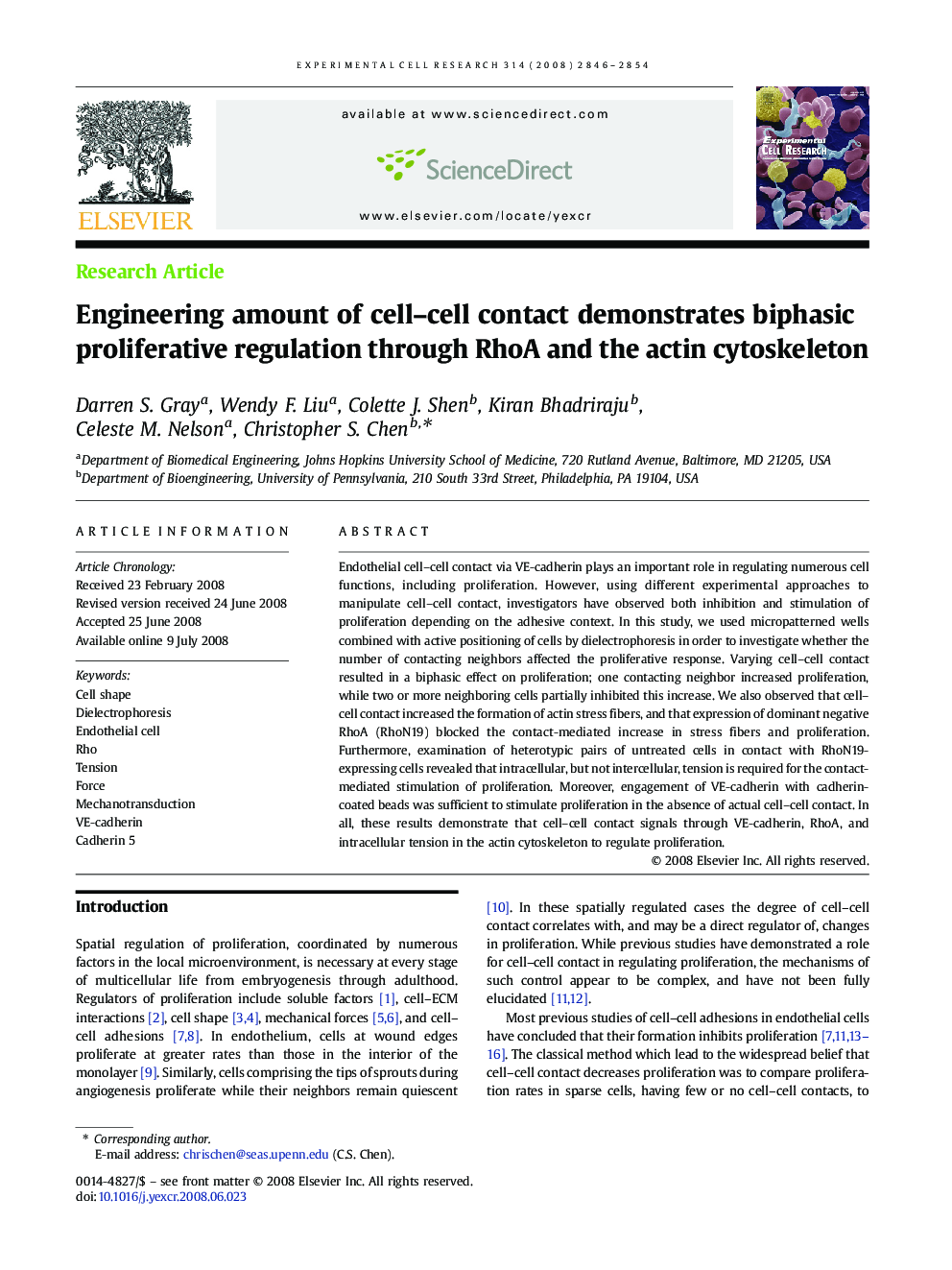| Article ID | Journal | Published Year | Pages | File Type |
|---|---|---|---|---|
| 2131770 | Experimental Cell Research | 2008 | 9 Pages |
Endothelial cell–cell contact via VE-cadherin plays an important role in regulating numerous cell functions, including proliferation. However, using different experimental approaches to manipulate cell–cell contact, investigators have observed both inhibition and stimulation of proliferation depending on the adhesive context. In this study, we used micropatterned wells combined with active positioning of cells by dielectrophoresis in order to investigate whether the number of contacting neighbors affected the proliferative response. Varying cell–cell contact resulted in a biphasic effect on proliferation; one contacting neighbor increased proliferation, while two or more neighboring cells partially inhibited this increase. We also observed that cell–cell contact increased the formation of actin stress fibers, and that expression of dominant negative RhoA (RhoN19) blocked the contact-mediated increase in stress fibers and proliferation. Furthermore, examination of heterotypic pairs of untreated cells in contact with RhoN19-expressing cells revealed that intracellular, but not intercellular, tension is required for the contact-mediated stimulation of proliferation. Moreover, engagement of VE-cadherin with cadherin-coated beads was sufficient to stimulate proliferation in the absence of actual cell–cell contact. In all, these results demonstrate that cell–cell contact signals through VE-cadherin, RhoA, and intracellular tension in the actin cytoskeleton to regulate proliferation.
